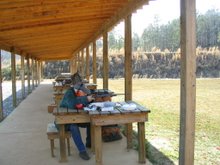Veterans Day hasn't always been known as Veterans Day, and it hasn't always been celebrated on Nov. 11.
The federal holiday was originally called Armistice Day and established to honor World War I veterans. It falls on Nov. 11 to mark the signing of the Armistice that ended World War I, which was formally ended at the 11th hour of the 11th day of the 11th month of 1918. (Of the 23 million U.S. veterans living today, there is only one surviving World War I veteran. His name is Frank Woodruff Buckles. He is 109 years old.)
In 1919, on the first anniversary of the Armistice, President Woodrow Wilson declared the day Armistice Day, saying: "To us in America, the reflections of Armistice Day will be filled with lots of pride in the heroism of those who died in the country's service and with gratitude for the victory, both because of the thing from which it has freed us and because of the opportunity it has given America to show her sympathy with peace and justice in the councils of the nations."
In 1971, though, the Uniform Monday Holiday Act pushed Veterans Day to the fourth Monday of October. That move was reversed in 1978 when the day was moved back to its original Nov. 11 celebration date. Armistice Day began its transformation to Veterans Day in 1953, when Alfred King, a shoe store owner in Emporia, Kansas, had the idea to celebrate all veterans, not just those who served in World War I, on Armistice Day. King campaigned for the change at the local, state and federal levels, and on May 26, 1954, President Dwight Eisenhower signed the bill into law. (In most of the rest of the world, however, the day is still called Armistice Day or Remembrance Day.)
Today the holiday honors all veterans of U.S. military conflicts. It is not to be confused with Memorial Day, which each year on the last Monday of May pays tribute to U.S. soldiers who died during military service.




1 comment:
I never knew the details of Veteran's Day. Thank you for posting this.
Post a Comment